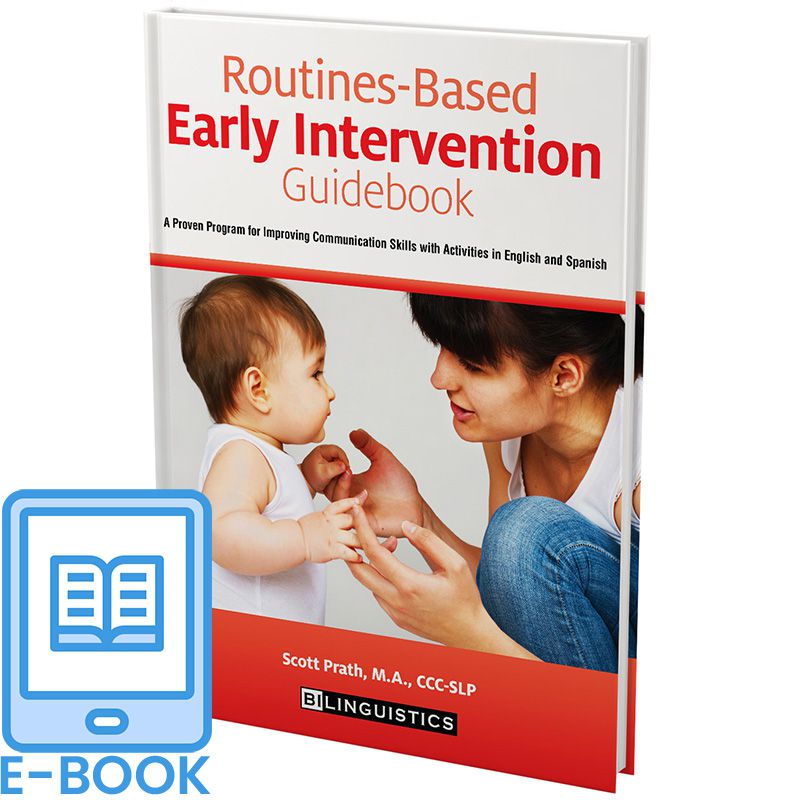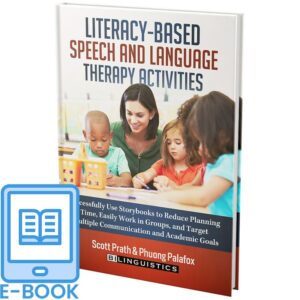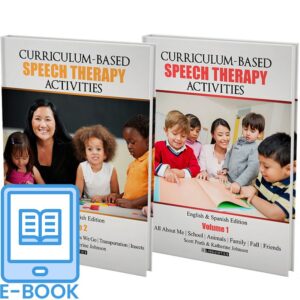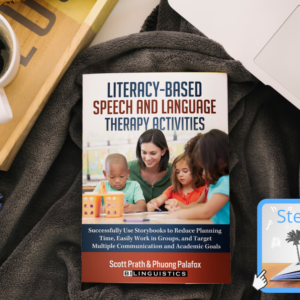Routines-Based Early Intervention Guidebook: Digital E-Book
$18.00

Successfully increase communication in young children by enriching their daily routines!
Those of us who work with young children know how important it is to get parents on board to support their child’s language intervention. And those of us who are parents know how busy life can be.
How do we get parents to implement the language strategies we want them to use with their children?
We incorporate them into their everyday routines! This ebook includes:
- 12 Routines-Based Early Intervention Activities – each daily routine lends itself to teaching a specific strategy
- Developmental Norms Charts so you know where your child stands and where they are going next.
- In English and Spanish to meet the needs of many families.
- Many opportunities to label items and actions, model phrases, imitate sounds, express preferences
- Parent Strategies to make it easy for them to implement language enrichment strategies.
- Signing Instructions and photographs to help families learn new signs.
- Easy Data Collection sheets to help track progress [/unordered_list]
What’s Inside? Take a Look:
Due to their downloadable nature, e-books are non-refundable.
Need CEUs?












Reviews
There are no reviews yet.